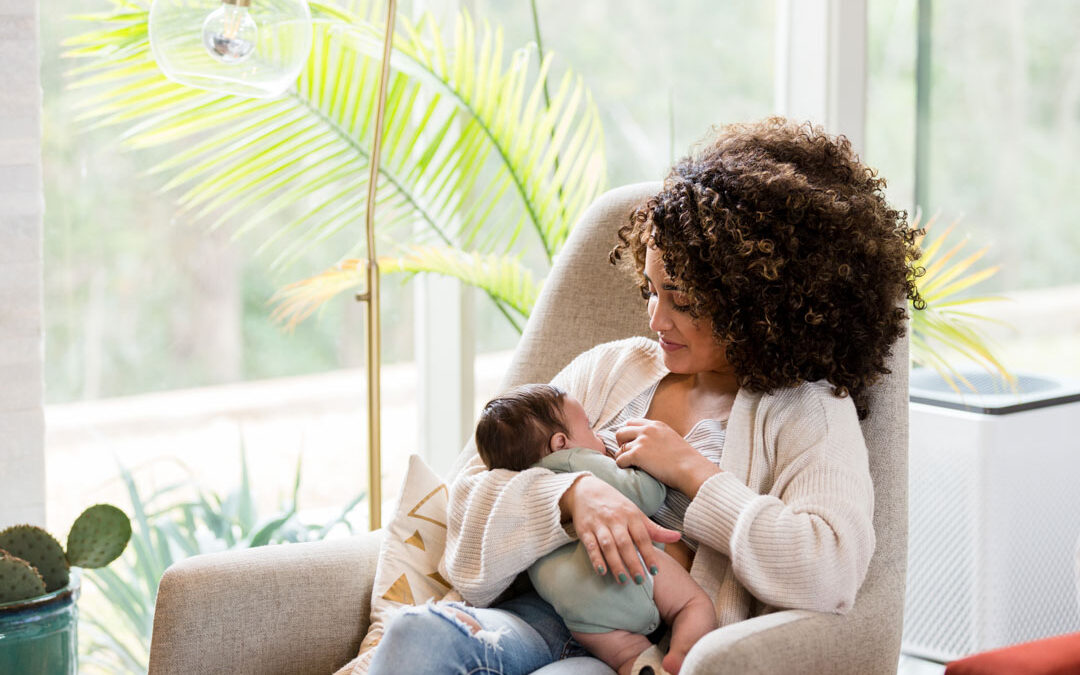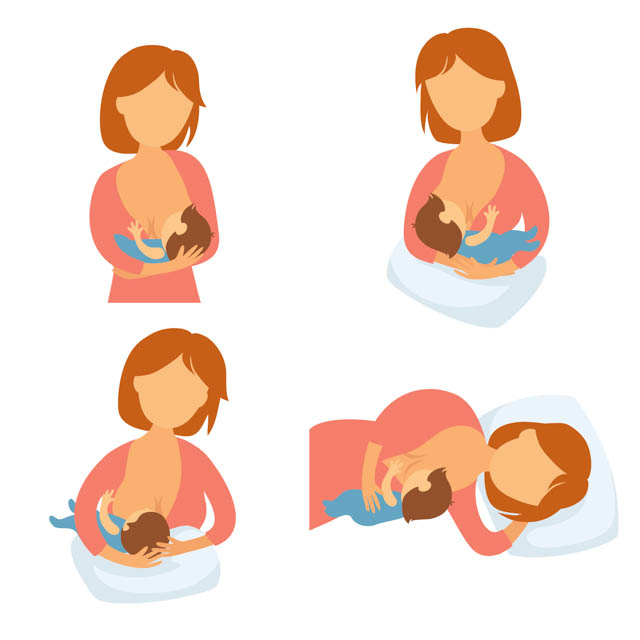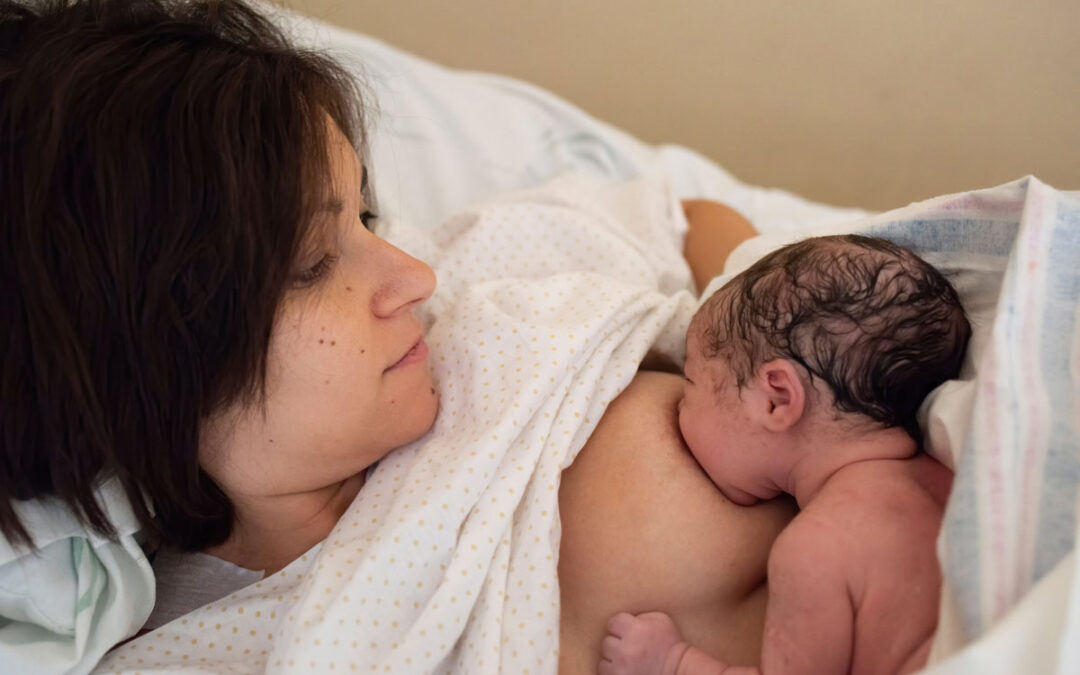
World Breastfeeding Week (WBW) is a time to celebrate the incredible benefits of breastfeeding and to advocate for policies that support breastfeeding mothers. But sometimes, the best way to understand the importance of something is to look at the numbers. Let’s dive into some key statistics that highlight why breastfeeding is so crucial for babies, mothers, and our world.
The Impact on Infant Health
Reduced infant mortality: Breastfeeding can reduce infant mortality by up to 13%. This means fewer babies die from preventable causes like diarrhea and pneumonia.
Protection against diseases: Breast milk contains antibodies that help protect babies from a range of illnesses, including ear infections, respiratory infections, and allergies.
Cognitive development: Studies have shown that breastfed babies tend to have higher IQs and better cognitive outcomes.
Stronger immune systems: Breast milk helps build a baby’s immune system, reducing the risk of chronic diseases later in life, as supported by the CDC, WHO, American Academy of Pediatrics, Cleveland Clinic, and others.
The Benefits for Mothers
Reduced risk of disease: Breastfeeding lowers the risk of numerous diseases, particularly some of those most prevalent in today’s society. This includes diseases such as breast cancer and ovarian cancer, type 2 diabetes, cardiovascular risk, bone health, and postpartum depression.
Cost-effective: Breastfeeding saves families money on formula as well as healthcare costs. Numerous groups, such as The Academy of Breastfeeding Medicine, have investigated the different aspects of savings that impact a family’s finances when they choose to breastfeed.
Bonding: Breastfeeding promotes bonding between mother and baby. The research is often considered complex and nuanced, but it is a long time supported belief by breastfeeding specialists.
Faster weight loss: Breastfeeding can help new mothers lose weight more quickly and return to their pre-pregnancy weight, particularly due to the fact breastfeeding burns extra calories, often contributing to weight loss. Postpartum hormones can also play a role in this benefit. La Leche League, Healthline and other sources offer articles and support on this topic; however, it is not a guaranteed form of postpartum weight loss.
The Global Picture
Inequalities: Breastfeeding rates vary widely across the globe, with disparities based on income, education, and geographic location. Globally, around 40-50% of infants are exclusively breastfed for the first six months and the median duration of breastfeeding is 12-23 months; however, in the U.S., only about 25% of infants are exclusively breastfed for the first six months with the average duration only around 8-12 months.
Economic impact: It is estimated that breastfeeding saves billions of dollars in healthcare costs globally.
Lives saved: The Cost of Not Breastfeeding Tool calculates that more than 515,000 lives could be saved each year if breastfeeding is protected, promoted, and supported in line with the World Health Organization’s (WHO) recommendations.
Sustainable development: Breastfeeding is a sustainable and environmentally friendly way to feed a baby. Since 2016, the WBW campaign has aligned its goals with the Sustainable Development Goals (SDGs) of the United Nations for this very reason.
These statistics paint a clear picture of the immense benefits of breastfeeding, and the fact that mothers across the globe need support in their journeys. That’s why Hygeia Health is committed to supporting mothers on their breastfeeding journey. Our high-quality breast pumps and educational resources are designed to make breastfeeding easier and more enjoyable.
It’s more than just nutrition; it’s an investment in the health and well-being of both mother and child. Despite the overwhelming evidence, many mothers face challenges in breastfeeding. Look to our next post in this series to dive into those challenges as we support moms through World Breastfeeding Week.

World Breastfeeding Week is here, running from August 1-7, and this year’s theme, “Closing the Gap, Support for All,” underscores the critical need to improve breastfeeding support and reduce inequalities.
At Hygeia, we know that breastfeeding is a cornerstone of child health and nutrition, yet countless mothers face challenges that hinder their breastfeeding journey. Throughout the upcoming week, we take a deep dive into the current state of breastfeeding awareness and the challenges that many mothers face as well as resources for overcoming those challenges. We will also provide some best practices for successful breastfeeding.
The Breastfeeding Gap
The proven benefits of exclusive breastfeeding are endless. The perfectly balanced nutrition source provides essential antibodies and nutrients that protect infants from a range of illnesses and can reduce infant mortality by up to 13%. The World Health Organization estimates that breastfeeding could save the lives of over 820,000 children under five years of age annually.
Unfortunately, breastfeeding rates vary significantly across the globe, with disparities evident among socioeconomic groups, ethnicities, and geographic locations. These disparities highlight the urgent need for targeted support to ensure all mothers have the resources and encouragement they need to breastfeed successfully, thus the theme of “Closing the Gap” for this year’s World Breastfeeding Week.
The Breastfeeding Challenge
New mothers often encounter significant hurdles in establishing and maintaining successful breastfeeding. Physical challenges such as sore nipples, insufficient milk supply, or baby latching difficulties can be overwhelming especially with many moms feeling a lack of support during that critical first week.
Societal pressures, including a lack of workplace support, inadequate maternity leave, and cultural norms that prioritize formula feeding, can also discourage breastfeeding and, again, create a lack of support even for those mothers who desire to breastfeed. Additionally, misinformation and limited access to lactation support can contribute to breastfeeding cessation.
Collectively, these situations and factors create a complex environment that makes it difficult for many women to achieve their breastfeeding goals.
Overcoming The Challenges
The good news? Many organizations and even individuals–moms like you–are dedicated to making breastfeeding less of a challenge for moms globally, thus the initiative of World Breastfeeding Week. This movement is initiated by the World Alliance for Breastfeeding Action (WABA), which is dedicated to the protection, promotion and support of breastfeeding worldwide. To address the challenges of breastfeeding, comprehensive support systems must be in place: education, counseling, and practical assistance.
Hygeia is excited to have more resources than ever available to support mothers with the launch of our new website. Not only does our parent blog offer new education on a weekly basis, but we also partner with Nest Collaborative to provide virtual breastfeeding consults accessible anytime, anywhere, covered by most insurance plans at no cost to you.
Breastfeeding Best Practices
Along with specialized support, knowing and understanding the best practices of breastfeeding can heavily impact a mom’s success and decision to stick with breastfeeding and reach her goals. Early initiation by breastfeeding within the first hour of baby’s life is the first step every mom should aim to achieve while also taking advantage of any on-staff lactation consultants at the hospital.
Moms should strive to breastfeed for the first six months with breast milk as the sole source of nutrition. Beyond that, babies will highly benefit from the breast milk nutrition for the next two years, but should also be introduced to complementary foods after six months of age. It is also imperative to build a strong support system as a breastfeeding mother. This includes family, friends, healthcare providers, and lactation consultants.
Commitment to Supporting Mothers
At Hygeia Health, we are dedicated to empowering mothers through high-quality breast pumps and comprehensive support. Our products are designed to make breastfeeding more comfortable and efficient, while our resources provide valuable information and guidance.
World Breastfeeding Week is an opportunity to raise awareness about the importance of breastfeeding and to advocate for policies that support breastfeeding mothers. Let’s work together to close the breastfeeding gap and ensure that every mother has the support she needs to nourish her baby through breastfeeding.

While it would be great if it were always convenient to breastfeed baby directly, sometimes that’s just not the case! Life can be hectic, and it can be hard to plan out, pump, and store for baby feeding.
When it comes time to pump and store breastmilk, there are plenty of resources to help. Check out part of KellyMom’s super handy Milk Storage Guide below (she offers more information if you click on the link!) and these pumping and storing tips from Texas WIC.
From KellyMom:

To avoid waste and for easier thawing & warming, store milk in 1-4 ounce portions. Date milk before storing. Milk from different pumping sessions/days may be combined in one container – use the date of the first milk expressed. Avoid adding warm milk to a container of previously refrigerated or frozen milk – cool the new milk before combining. Breastmilk is not spoiled unless it smells really bad or tastes sour.
To thaw milk
- Thaw slowly in the refrigerator. (This takes about 12 hours – try putting it in the fridge the night before you need it.) Avoid letting milk sit out at room temperature to thaw.
- For quicker thawing, hold container under running water – start cool and gradually increase temperature.
Previously frozen milk may be kept in the refrigerator for up to 24 hours after it has finished thawing. Do not refreeze.
To warm milk
- Heat water in a cup or other small container, then place frozen milk in the water to warm; or
- Use a bottle warmer.
- NEVER microwave human milk or heat it directly on the stove.
The cream will rise to the top of the milk during storage. Gently swirl milk (do not shake) to mix before checking temperature and offering to baby.
If baby does not finish milk at one feeding, it is probably safe to refrigerate and offer within 1-2 hours before it is discarded.”
Tips from Texas WIC
Start pumping on maternity leave. If you plan to go back to work, it’s a good idea to begin pumping while you are still on maternity leave. It will help you get prepared and build a backup supply of breastmilk. You can begin anytime you feel ready. Start with pumping once a day between feedings. Many moms find that they are able to express more milk in the morning. Once you find a time that works best for you, try to pump around the same time each day.
Keep a consistent schedule. When you return to work, you will need to express your milk during the times you would normally feed your baby. Let your employer know about the importance of keeping that same schedule. Pumping at work will help you breastfeed your baby longer because it tells your body to keep making milk. It will also keep your body comfortable so that you can focus on work.

Everyone knows that breastfeeding is SO beneficial for babies. This article from ProMom lists 101 reasons (with sources!) breastfeeding is a great idea, starting with the fact breastfeeding is recommended by the American Academy of Pediatrics.
Number four on the list talks about the unique nutritional needs breast milk meets for your baby:
“Human milk is uniquely superior for infant feeding and is species-specific; all substitute feeding options differ markedly from it. The breastfed infant is the reference or normative model against which all alternative feeding methods must be measured with regard to growth, health, development, and all other short and long-term benefits.”
What you probably don’t know, however, is how many benefits there are for momma! Check out this article by Dr. Alicia Dermer to find out all the ways breastfeeding can improve your health, both in the short term and the long term.
“It is now becoming clear that breastfeeding provides mothers with more than just short-term benefits in the early period after birth.
A number of studies have shown other potential health advantages that mothers can enjoy through breastfeeding. These include optimal metabolic profiles, reduced risk of various cancers, and psychological benefits. Production of milk is an active metabolic process, requiring the use of 200 to 500 calories per day, on average. To use up this many calories, a bottle-feeding mother would have to swim at least 30 laps in a pool or bicycle uphill for an hour daily. Clearly, breastfeeding mothers have an edge on losing weight gained during pregnancy. Studies have confirmed that non-breastfeeding mothers lose less weight and don’t keep it off as well as breastfeeding mothers (Brewer 1989).”
As if you needed more reasons, this video from CBS talks about a recent study that shows breastfeeding your baby could have long-term implications for development including a higher IQ, education and income all the way through adulthood!
“For the study, researchers followed more than 3,400 children in Brazil for a period of 30 years.
CBS News medical contributor Dr. Holly Phillips says the results were striking. “It turns out, compared to kids who were breastfed for less than a month, kids who are breastfed for a year or longer had almost 4 points higher in IQ” in adulthood, she told “CBS This Morning.”
The children who were breastfed also stayed in school about a year longer and earned more money when they grew up — an amount equal to about $104 extra each month.
The researchers corrected for other factors that could influence IQ, such as the child’s birth weight, mother’s education level and family income, and concluded breastfeeding makes a significant difference.”
You can read the rest of the article and see the video here.

While breastfeeding is one of the most natural acts in the world, that doesn’t mean it comes naturally to all moms and babies. It’s a bit of an art form- a skill that both mom and baby have to work together to develop.Thankfully, there are plenty of step-by-step guides that will help you breast feed your baby. We like
this one by Fit Pregnancy that demonstrates three different ways you can hold your baby when breastfeeding.
In their view, the most crucial part of breastfeeding is getting your baby to latch:
“Any good lactation consultant will tell you: Latching is everything. Here’s how to do it:
Step 1: Position the baby on her side so she is directly facing you, with her belly touching yours.
Step 2: Next, prop up the baby with a pillow, if necessary, and hold her up to your breast; don’t lean over toward her.
Step 3: Place your thumb and fingers around your areola and tilt your baby’s head back slightly and tickle her lips with your nipple until she opens her mouth wide.
Step 4: Help her “scoop” the breast into her mouth by placing her lower jaw on first, well below the nipple. Tilt her head forward, placing her upper jaw deeply on the breast. Make sure she takes the entire nipple and at least 1 1/2 inches of the areola in her mouth.”
The article suggests several ways you can hold your baby for comfortable feeding.

1. Cradle
Position your baby on your forearm, her head in the crook of your arm. Support her bottom with your other hand. Pull her in close to you, belly to belly, with her ear, shoulder and hip in a straight line.
2. Football
While useful for all women, this position is particularly helpful for mothers who have had a Cesarean section. Place your baby on a pillow, tucked close to your side. Rest your arm on the pillow to bring your baby’s mouth up to your breast; support her head with your hand.
3. Side-Lying
This position is also helpful if you had a C-section or want to rest while nursing your baby. Lie on the side you will be breastfeeding on. Place your head on a pillow and draw your baby in close to you, using your arm to support her bottom. Use your other hand to bring your breast up to baby’s mouth.”
Better yet, watch this video for a live action step-by-step tutorial!

There is no reason to question your body when you don’t see milky white flowing from your breast when your baby arrives. The yellow, thicker liquid isn’t a sign that your milk has gone bad. In fact, this liquid gold is exactly what your body is meant to produce and exactly what your baby is craving.
Colostrum, often referred to as “liquid gold,” is the yellowish sticky substance your body produces in the first few days after childbirth before your regular breast milk comes in. It might be small in volume, but it packs a powerful punch! Here’s why it’s so important:
Immune system booster packed with antibodies
Colostrum is rich in secretory IgA antibodies, which act like a shield for your baby’s developing immune system. These antibodies line your baby’s intestines and respiratory tract, protecting them from germs and viruses in their new world.
“[Colostrum is] low in volume but high in protective factors, especially secretory IgA antibodies. These antibodies are passed directly from mom to baby through colostrum, providing immediate immune defense against illnesses like influenza, rotavirus, and ear infections.” – Dr. Tanya Altmann, pediatrician and co-founder of The Lactation Network
Nutrient Powerhouse
Don’t let the small amount fool you! Colostrum is concentrated with nutrients, high in protein, and low in sugar and fat. This makes it easy for your newborn’s tiny tummy to digest and provides essential energy for those early adjustments to life outside the womb.
“Colostrum is also high in protein and low in fat and sugar, making it easily digested by a newborn’s immature stomach.” – World Health Organization
Laxative Effect
More good news–Colostrum acts as a gentle, natural laxative! It helps your baby expel their first stool, which, don’t be alarmed, is a sticky, dark substance called meconium. Meconium accumulates in the baby’s intestines during pregnancy and needs to be eliminated to prevent problems like jaundice.
“Colostrum acts as a natural laxative, helping your baby pass its first stool (meconium).” –American Academy of Pediatrics
Promotes Gut Health
The foundation for good gut health starts early! Colostrum introduces beneficial bacteria that contribute to a healthy gut microbiome in your baby. This microbiome plays a vital role in digestion, immune function, and overall health.
“The initial exposure to bacteria through colostrum plays a crucial role in shaping the infant’s gut microbiome. Colostrum’s prebiotics, along with potentially some live bacteria of its own, act as a foundation for a diverse and balanced gut community.“ -Dr. Lilian Cheung, a pediatric gastroenterologist
Emotional Bonding
While it doesn’t come directly from the colostrum, the immediate focus on skin-to-skin contact, which is encouraged during colostrum feeding, promotes emotional bonding between you and your baby. This closeness releases feel-good hormones and helps regulate your baby’s body temperature.
“Skin-to-skin contact in the first 48 hours helps regulate the baby’s body temperature, heart rate, and breathing.” –Academy of Breastfeeding Medicine (ABM)
Colostrum is a natural wonder food designed to give your baby the best possible start. While the amount may seem small, its impact on your newborn’s health is truly significant. So relax, mama! Your body is perfectly designed to nourish your little one.








